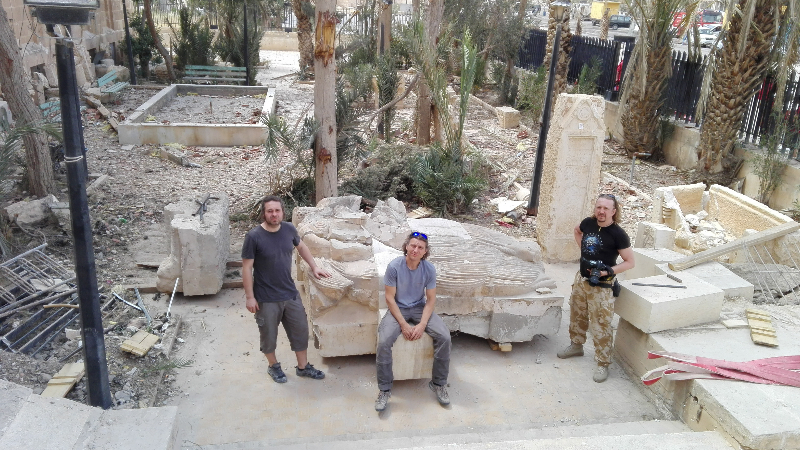After an initial reconnaissance in early April 2016, conservators and archaeologists from the Polish Centre of Mediterranean Archaeology, University of Warsaw returned to Palmyra in May to resume work on the rescue conservation of objects in the Palmyra Museum.
The work was undertaken by conservators Bartosz Markowski, and Krzysztof Jurków and archaeologists, Tomasz Waliszewski, PCMA director and Robert Żukowski, an employee of the Institute of Archaeology and Ethnology, Polish Academy of Sciences.
The main objective of the current work was to secure the objects damaged during the recent turmoil andto prepare them for transfer. The smashed and damaged fragments of sculptures and stuccoes were collected to enable their reassembly in the future. The specialists also reported on the state of the artifacts they found in the halls of the war-ravaged museum and prepared guidelines for further procedures concerning the different types of objects, especially with regard to the advisability of their moving.
The last and most symbolic act of their work was the famous Lion of Allat, discovered in 1977 by Prof. Michał Gawlikowski and smashed during the recent DAESH occupation of Palmyra. A crane was used to provisionally reassemble the statue, weighing over 10t, on the porch in front of the Museum.
Another unique find of the Polish mission, a unique marble statue of Athena–Allat, proved to be badly damaged. Its head and arms are broken off and although larger fragments of the statue have been recovered from the rubble, many smaller pieces have crumbled into dust and cannot be preserved.
The international community of Palmyra researchers should be involved directly in future activities, say Markowski and Żukowski. Archaeologists, art historians and conservators familiar with the objects in question should evaluate the losses of the Palmyra Museum collection by identifying the broken artifacts once they have been moved to museums in Homs and Damascus. This will be the first step to enabling proper conservation and restoration work in cooperation with the Directorate General of Antiquities and Museums of Syria (DGAM).
Polish archaeologists and conservators were the first foreign specialists to respond to an appeal by the DGAM for assistance in preserving Palmyra’s monuments. – Not only have we contributed our work and knowledge, but in doing so we have expressed a basic solidarity with people affected by the armed conflict that has been tearing Syria apart for over five years now – says PCMA Director Prof. Tomasz Waliszewski. Further efforts by Polish specialists geared to save the antiquities of Palmyra are planned. – It could take several years to inventory the losses as well as to conserve and restore the objects damaged in the conflict – explains Waliszewski.

